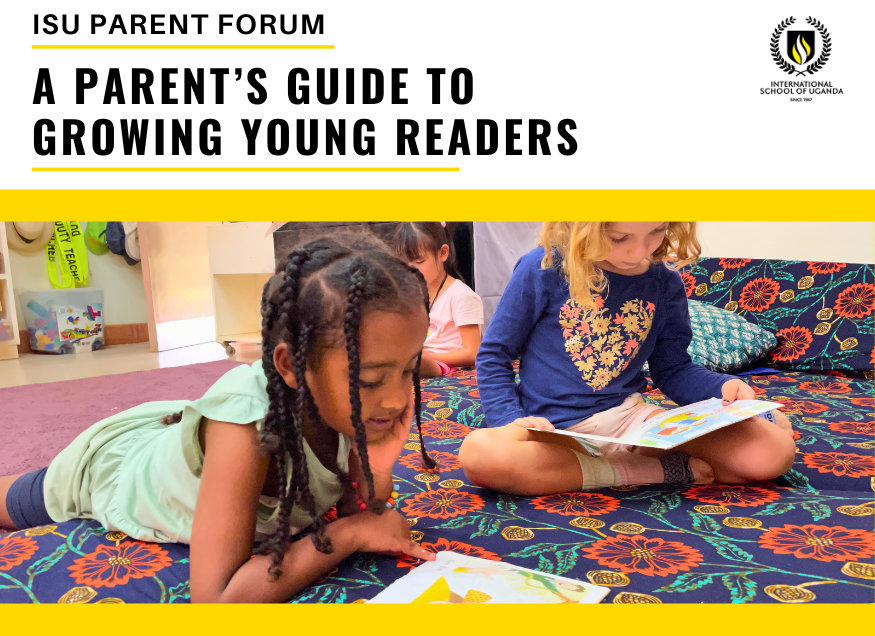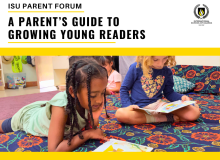
We welcomed Emily Loughead, literacy strategist with Erin Kent Consulting, to lead this forum. She began by asking us to reflect on ourselves as readers in just the last few days, and we were reminded of the many reasons to read - for information, to navigate, to understand or to connect, as well as for pleasure and enjoyment. Growing strong readers is essential for future success and fulfillment.
Emily shared some of the recent science about learning to read. While our brains are naturally wired to speak - we hear, process meaning then use context to make sense - all automatically, the same is not true of reading. The brain needs to learn a process called orthographic mapping, to handle the added complexity of print in making meaning.
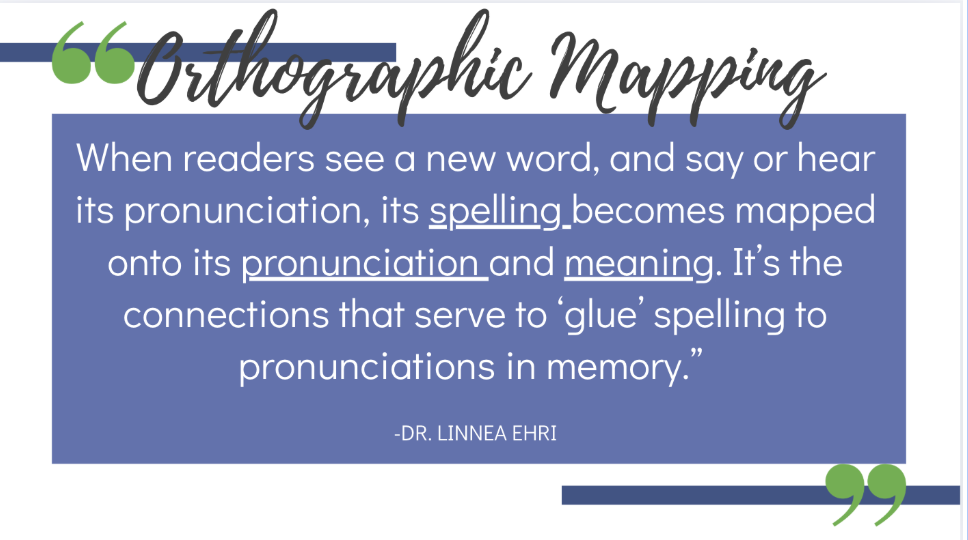
Learning to read is a complex process - this diagram shows it in its simplest form.
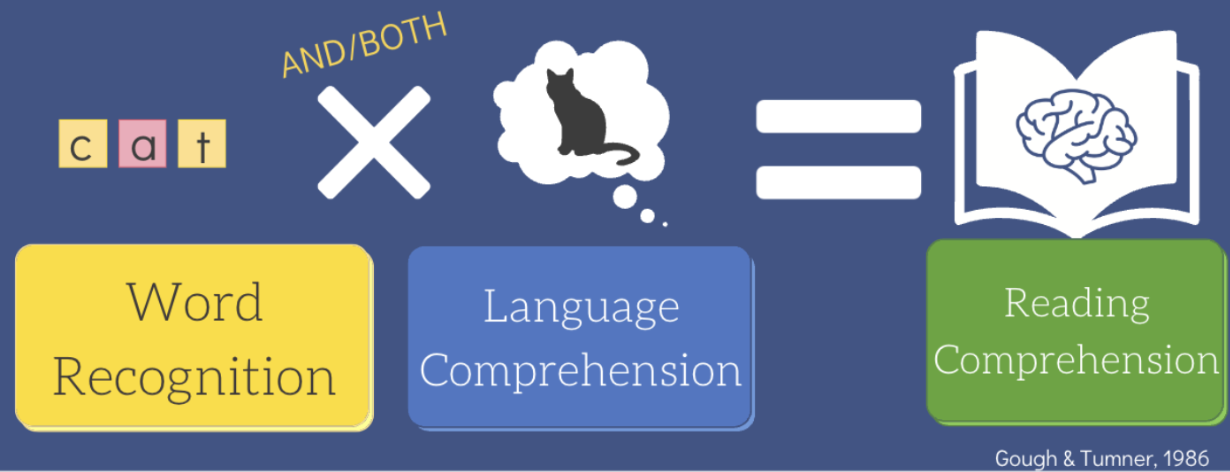
Phonological awareness is essential in learning to read. This includes the ability to hear, identify and manipulate individual sounds, syllables, rhymes, and more. Learners will progress through the following stages in building these skills.
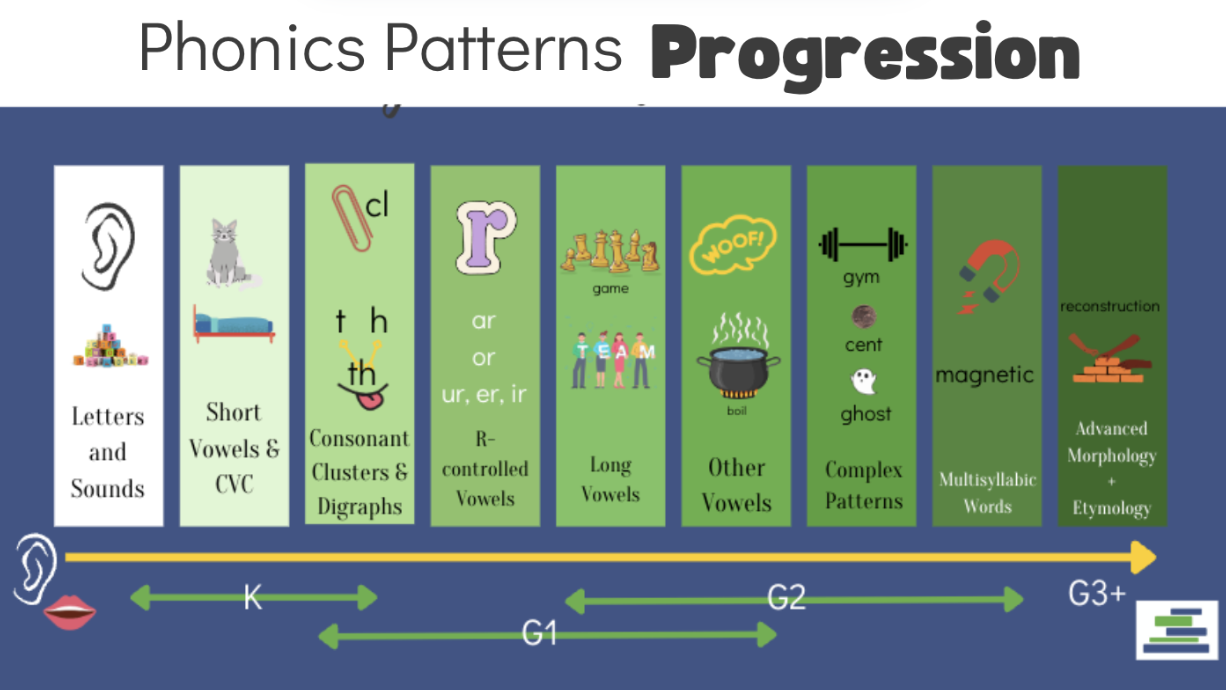
We watched this video together Inside the Classroom: Word Study. It gave insight into the ways that phonological awareness and word recognition are taught in the Junior School at ISU.
Having helped us understand the shifts in our understanding of how children learn to read, Emily suggested some ways we can support all the elements of word recognition at home.
To build phonological and phonemic awareness:
- Break words into syllables by tapping, stepping, or clapping. One way to identify the number of syllables in a word is to put your hand under your chin as you say the word. The number of times your chin touches your hand is the number of syllables!
- Isolate sounds in words - find words that begin or end with the same sound - collect objects or sort pictures.
- Practice blending sounds - sound out a word (/f/…/r/…/o/…/g/) and have your child say the word
- Dictate short sentences for your child to write using their phonic knowledge.
To support word study and spelling:
- Explore big words by breaking them into prefixes, roots, and suffixes (e.g., un-absorb-ed).
- Encourage your child to break a complex word into syllables to help with spelling - (say it, clap syllables, write each syllable, include a vowel in each syllable)
- Look for patterns and word families - eg; collect words with the same prefix or suffix
- Encourage word inquiry - using online tools like Online Etymology Dictionary to learn about the parts of words, structure and meaning as well as their root and origin.
Language comprehension is the other key component of reading comprehension. This can be broken down into elements: background knowledge, vocabulary, language structure, verbal reasoning and literary knowledge. The most important of these are background knowledge (the reader uses what they already know to make sense of a text) and vocabulary (“... the glue that holds stories, ideas and content together … making content accessible”).
Emily suggested many ways to prioritise developing wide background knowledge and strong vocabulary in our children:
- Stay connected to what is happening at school - discuss concepts and explore vocabulary
- Use conversation and oral language to build understanding of the world. Going offline together helps!
- Discuss “big ideas” and current events — build background knowledge.
- Listen to podcasts or audiobooks together (e.g., Brains On, Story Pirates, Book Club for Kids).
- Search for content together — visit the library, explore online kid-friendly news or videos.
- Create “text stacks” — groups of books linked by topic, author, or genre to deepen knowledge and interest.
- Talk about books - discuss what’s happening, why things happen and how characters feel
- Retell stories and discuss favourite parts
- Pause while reading to give brief explanations of unfamiliar words
- Ask open-ended questions to encourage multi-word answers and deeper discussion
Finally, a range of ways to build a strong culture of reading in your home.
- Celebrate and use your home language — tell stories, discuss problems, and reflect in your family’s natural language.
- Set aside Family Reading Time — read together regularly.
- Honor interests and choice — let your child pick books.
- Try series books to keep momentum and motivation.
- Make reading social — book swaps, mini book clubs, or sharing recommendations.
- Support reluctant readers with comics, audiobooks, and high-interest topics.
- Explore different genres — stories, nonfiction, poetry, articles, etc.
We thank Emily for deepening our understanding of the complexities of reading, and for sharing her expertise with us.
#ISUParentBlogs #ISUParentForum





.png&command_2=resize&height_2=85)
.png&command_2=resize&height_2=85)
.png&command_2=resize&height_2=85)







.png&command_2=resize&height_2=85)


.png&command_2=resize&height_2=85)






